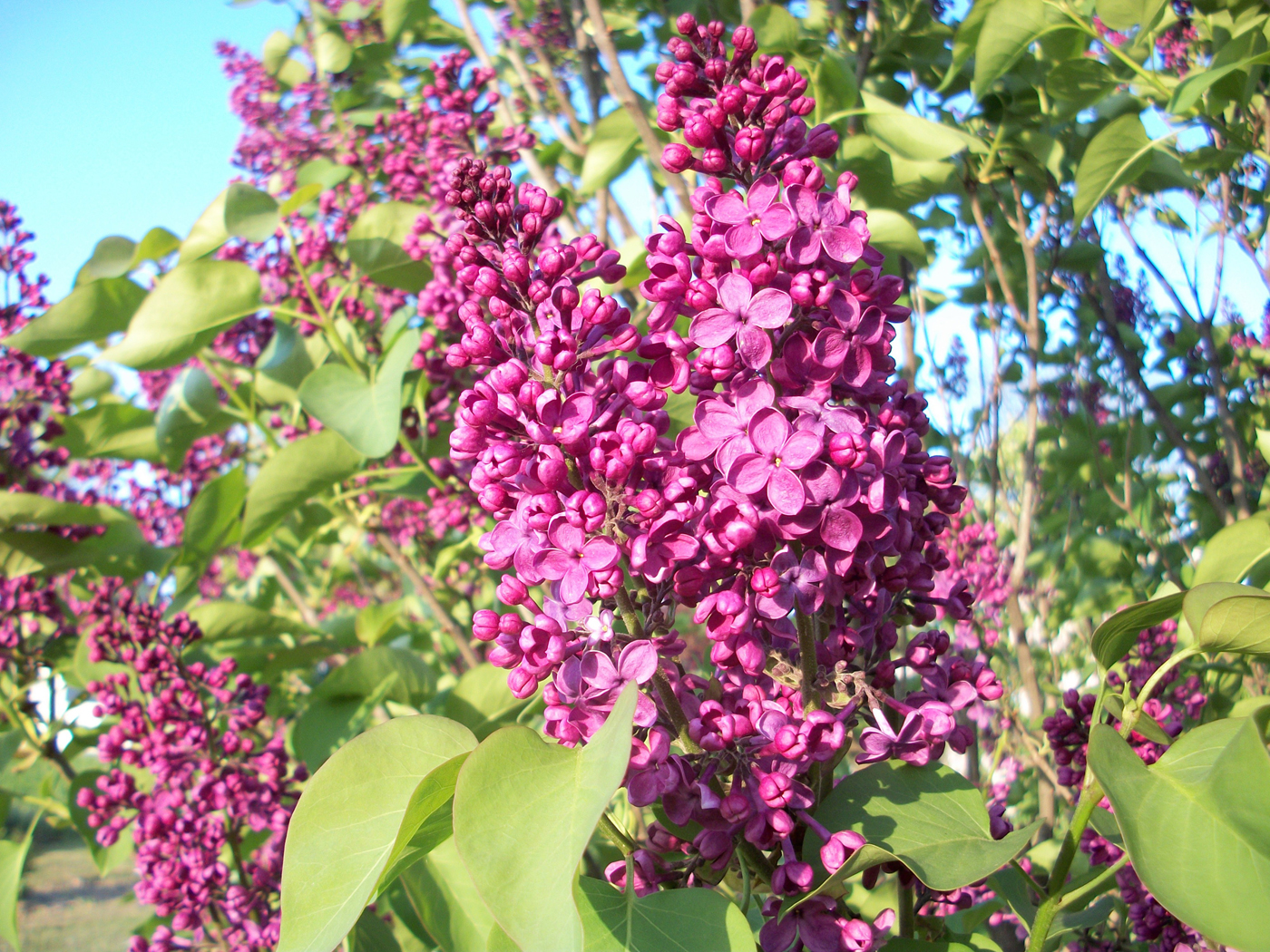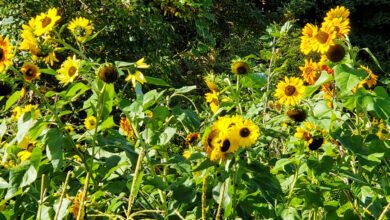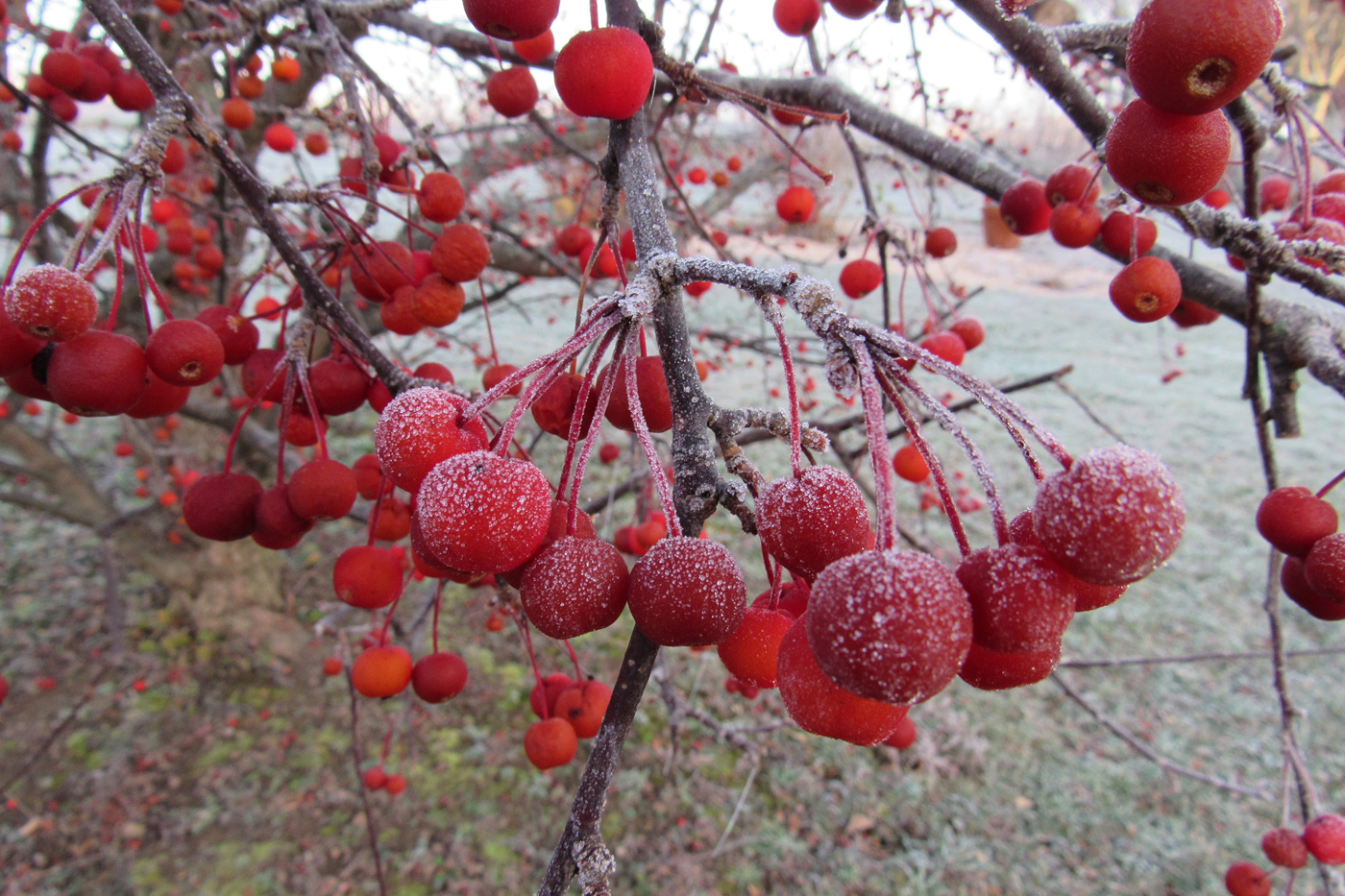Purple in the garden

If you love purple, 2018 is your year. Ultra Violet was chosen as the 2018 Pantone Color of the Year and that means purple will be making its way into fashionable gardens.
Pantone picked the purple hue because it, “communicates originality, ingenuity and visionary thinking that points us to the future,” and although you may not be motivated by the same reasons, purple is a fun color to incorporate into the garden. You probably already have some purple in your landscape and if you are looking to increase its presence, there are numerous flowers, foliage and even vegetable plants from which to choose.
When adding purple to your garden, remember it is a “cool” color and will tend to recede. If you want to bring out the purple blooms and foliage, plan on also using plants with golden flowers and leaves. Gold will warm up your plantings and provide contrast to make both purple and yellow shine.
Purple flowers abound in spring, summer and fall. Lilacs are probably one of the most common purple blossoming shrubs and First Editions® Virtual Violet® lilac has deep purple/blue flowers which fit well with the bright “ultra violet” theme.
Iris comes in purple shades, as do many annuals including pansies, petunias and impatiens. Zinnias and dahlias carry purple into the late summer and asters provide both dark purple and lavender hues into the autumn.
Native perennial plants like purple coneflower, Joe Pye weed, monarda and lobelia also feature purple and lavender blooms.
Purple blossoms add a pop to cut floral bouquets and purple vegetables, which include eggplant, beans and now even carrots, cauliflower and potatoes, are loaded with home-grown nutritional value.
When choosing perennials, consider Nepeta ‘Bokratune,’ which has large blue flowers. Penstemon ‘Pmoore14’ has bi-colored flowers with very large flower clusters. Salvia nemorosa is a sage with large lavender-pink flowers.
Foliage plants can also add purple to the garden and the selection is now way beyond ‘Palace Purple’ heuchera. ‘Purple Prince,’ a variety of alternanthera, is a ground cover, which has burgundy purple leaves with ruby-rose undersides. ‘Purple Prince’ withstands both heat and humidity and has low water needs. It is a spreading plant and can be used as a filler in containers. ‘Purple Prince’ is ideal for low border ground cover and sets off blooms in flowerbeds.
Another very attractive foliage plant is Kirigami ornamental oregano. This oregano is not for culinary use (although it does have an oregano fragrance) and looks great in hanging baskets and containers. It has light green leaves with purple-green highlights and small rose flowers that attract butterflies and bees. Kirigami ornamental oregano is also drought and heat tolerant.






